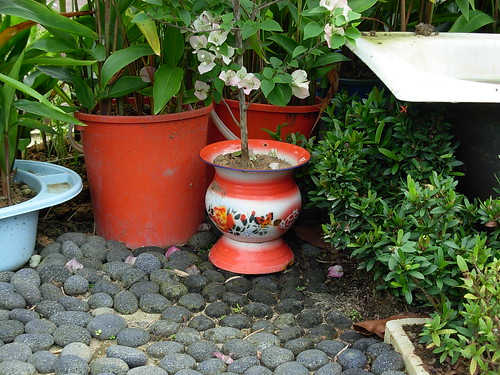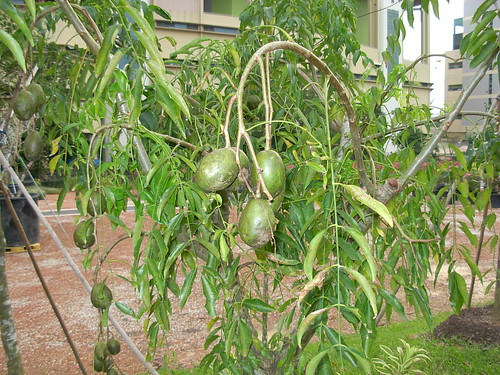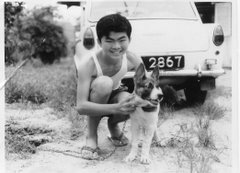Digital
Photography has indeed simplified the task of producing quality images of the
moon. The ability to mount my old 600 mm manual mirror lens to the body of my DSLR
has allowed me to capture some good images indeed. However to push the
challenge further I have for past few years been a keen “Moon transit”
photographer i.e. capturing aircraft as they fly across the face of the moon. I am fortunate that where I now live the
Moon’s orbit and most of the commercial flight paths make it easy for me to set
up my gear in my back balcony or backyard to achieve this. In addition there
are many on-line apps that allow real time monitoring of flight paths. However
this quest requires lots of patience and luck. Often there are long periods of
waiting in-between flights. During these breaks I find myself staring at the
moon and my mind wanders back to my kampong days in Singapore. I start thinking of the significance the moon
played then and the beliefs both religious and superstitious of the various
races and groups of people in my kampong.
 |
Copy of an old slide image taken in Jalan Hock Chye digitally post processed
|
One colourful
memory that I always chuckle when I think about it is the ritual that my
Chinese neighbours undertook during the eclipse of the moon. I remember as a kid suddenly hearing the din
of pots and pans being struck constantly. Even the large kerosene tins would be
brought into play. Most of the Chinese households would be involved and I
learnt that the belief was that a Dragon was swallowing the Moon and the noise
created was to scare the dragon from completely removing the Moon from the sky.
This ritual did go on regularly whenever there was an eclipse for most of my
early years but as society became educated the practice faded away.
When I relate
this to some of my friends a few remember this practice but others think I made
it up.
The significance
of the moon is central in Chinese culture. Most if not all festivals are tagged
to the lunar calendar
Likewise the
Indian celebrations are also pegged to their own lunar calendar. The two main
ones Deepavali which occurs during the New moon of Ashvin (Hindu
calendar) and Thaipusam which is celebrated during the full moon day of the Tamil month of Thai
In the past the
Malay Hari Raya dates were determined by the sighting of the new moon by local
religious authorities. During those pre mobile phone years the method of
relaying the successful sighting was by the use of carbide cannons. Carbide was
mixed with water in the hollow of a bamboo cylinder and when the fuse was lit a
small explosion took place and this could be heard for miles in the quiet of
the evenings. When this was heard in a kampong one of the Malay families would
then in turn fire a cannon and the message would then spread from kampong to
kampong until the entire Malay community across the island would be informed to
start celebrating the following day.
For the Eurasian
and Christian households the main festival linked to the moon was Easter which is
held on the first Sunday after the first full moon occurring on or after the
vernal equinox. The other Holy days of Lent are adjusted accordingly. As kids
when we were brought by our parents for the traditional “visitations of
churches” on Maundy Thursday we often noticed the bright nearly full or full moon as we walked along the Queen Street / Victoria
Street area. The significance of the moon was unknown to us or rather we were
more focussed on the treats that we were rewarded with for being well behaved.
Treats like freshly baked Hot Cross Buns from the two well-known bakeries
around the vicinity “Ah Teng” and “The Red House Bakery”. The other treat would
be the Kueh Putu Piring (or Kueh Tutu as it is now known as).
Similarly the dates of Ascension Thursday and Pentecost Sunday vary each year. The former
celebrated forty days after Easter, and the latter ten days after the Ascension
(50 after Easter).
When Armstrong
landed on the moon in 1969, you can just imagine the reaction from the
different families in the kampong. There was disbelief, taunting and scepticism.
The full or
near-full moon was often a blessing if you came home late at night because it
lighted your way home. There were no street lights in the lanes leading to our
houses. With the moonlight we could avoid the portholes and on rainy days the
resultant puddles that were ever so present.
However the
moonlight also did cast numerous shadows from the trees and bushes. With movies
like “Pontianak” on our minds combined with the fragrant scent of the newly
blossomed frangipani flowers walking home usually turned into a quick paced trot.
I guess these
days in Singapore, the Moon between coconut palms is only a recollection of
some of the older generation. Moonlight between high-rise would be the norm.

.jpg)
+(1).jpg)
+(3).jpg)
+(2).jpg)


 So I am still without a photo of a well like the one in my kampong house. I heard that Ivy Singh Lim’s Bollywood Veggies in Lim Chu Kang has a well with pulley. Is any reader able to confirm?
So I am still without a photo of a well like the one in my kampong house. I heard that Ivy Singh Lim’s Bollywood Veggies in Lim Chu Kang has a well with pulley. Is any reader able to confirm? This one is not ‘authentic’ because it was made of plastic. A genuine kampong
This one is not ‘authentic’ because it was made of plastic. A genuine kampong 



 This is what a kampong where pig-rearing was carried out looked like. Hard to believe that this was Singapore just one generation ago eh? Photo courtesy of
This is what a kampong where pig-rearing was carried out looked like. Hard to believe that this was Singapore just one generation ago eh? Photo courtesy of  A typical Malay kampong house in old Singapore.
A typical Malay kampong house in old Singapore.


 Photo of me (right) and my younger brother James. On the left is the pond where we caught our
Photo of me (right) and my younger brother James. On the left is the pond where we caught our  1951 photo of my mother carrying my elder brother David. I was not born yet. The fish pond like this one was very common in Lorong Kinchir and Lorong Chuan area. So were the coconut trees which helped to bring in some income for us.
1951 photo of my mother carrying my elder brother David. I was not born yet. The fish pond like this one was very common in Lorong Kinchir and Lorong Chuan area. So were the coconut trees which helped to bring in some income for us.


























 Photo of me (in singlet), my parents and my younger brother in front of our first TV set
Photo of me (in singlet), my parents and my younger brother in front of our first TV set





